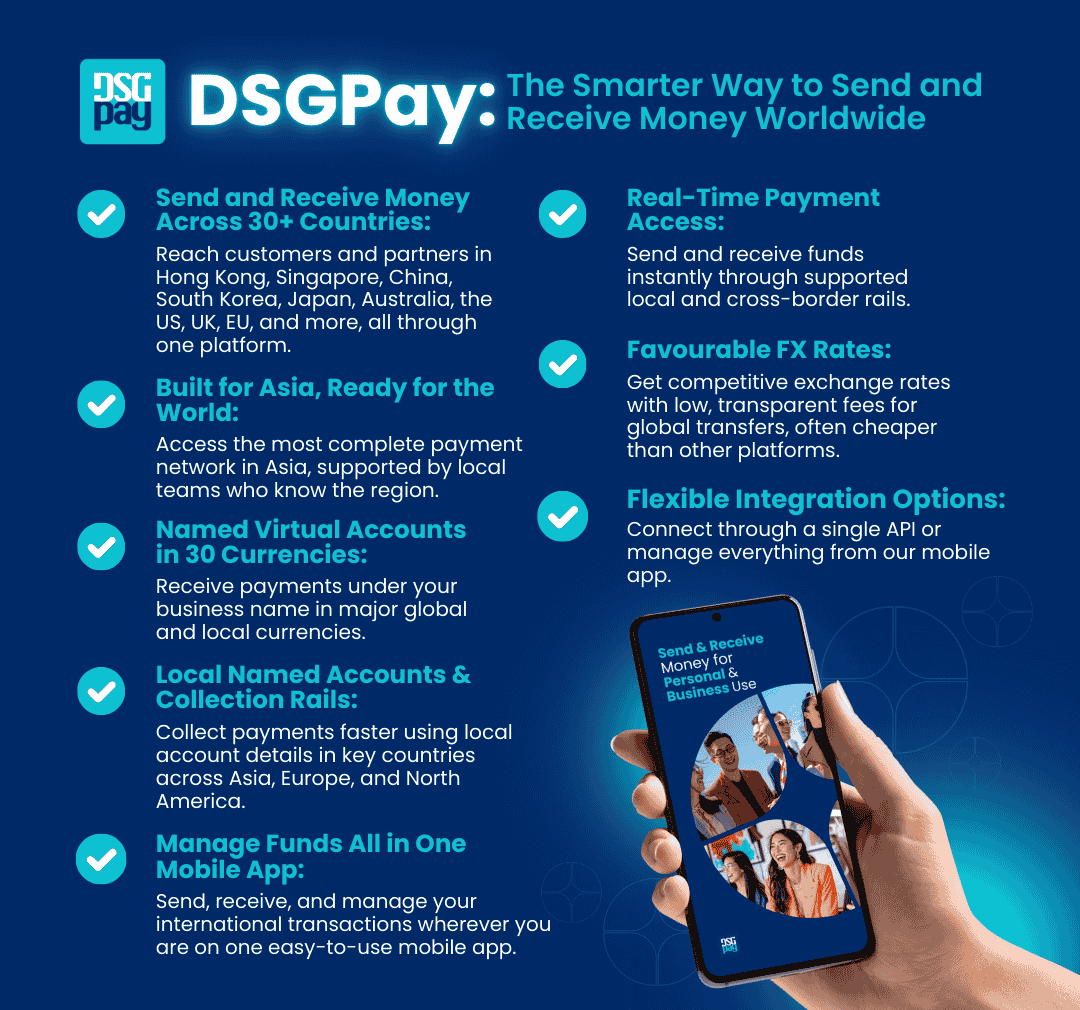If you have family or friends living in different countries or run a business with an international presence, you’re more than likely going to receive money from abroad. In 2024, global remittances to developing countries are expected to exceed $685 billion, highlighting just how vital international transfers have become.
When you receive payments from abroad, the sender typically decides on the transfer method and timing, which can impact fees, exchange rates, and the total amount you receive.
This blog will give you an overview of the best ways to receive money from abroad so that you can choose the one that suits your needs the best and gets you the maximum possible amount in your account.
Table of Contents
1. Bank-to-bank Transfer

You can receive funds from abroad via bank-to-bank transfers or international wire transfers. It’s considered to be a simple, safe and reliable option. On the other hand, the transfer can take between 1-5 working days to go through and can be costly.
Bank-to-bank transfers will usually be sent via the SWIFT network. As the receiver, all you have to do is provide the sender with some details, including your name, address, bank details, and a SWIFT or Bank Identifier Code (BIC).
Since SWIFT transfers don’t usually go directly from the sender’s bank to yours, third-party or intermediary fees might be applied, on top of the sender’s bank fees and foreign exchange fees. These fees depend on the banks involved, the transfer amount, and the countries of the transaction.
2. International Money Transfer Service
Another way to receive money from abroad into your bank account is by using an international money transfer service.
Both you and the sender will need to set up an account with your choice of international money transfer provider. The sender will exchange the funds in your desired currency and initiate a transfer using the account details you provide. This overseas payment is facilitated by the service provider. Depending on the provider, you might be able to get the funds in your account, a digital wallet or through an ATM.
You’ll usually find competitive foreign exchange rates and lower transaction fees with international money transfer providers.
Some well-known international money transfer providers are Wise, PayPal, Revolut, and Remitly.
3. Online Multi-currency Account

Multi-currency accounts allow you to hold multiple currencies at the same time. So, if both you and the sender have an account with the same multi-currency account platform, you can receive the funds in the same currency it was sent in.
Unlike bank-to-bank transfers, you can have some control over the currency conversion when receiving international payments via a multi-currency account.
Multi-currency accounts tend to have competitive currency exchange rates and fees. You can later choose to convert the funds to another currency at a lower overall cost or withdraw to your bank as per your liking.
4. International Money Order
International money orders are another option for receiving money from abroad. They are a secure way to receive funds from overseas via cheque and can be cashed or deposited into your bank account.
The sender can get an international money draft in the currency of their choosing from a financial institution or post office. The amount of the cheque can be covered by the funds in the sender’s account.
The sender can post the cheque to you. And once you receive it, you can either cash it at your bank or deposit it into your account.
The downside of using international money orders is that the drafts can sometimes take weeks to process. You might also encounter postal delays and fees for cashing in or depositing the cheque.
5. Cash Pick-up
If you’d like to receive your money from overseas in cash instead of having it deposited into your account, you can do so with the help of specialist providers or third-party merchants.
The option of cash pick-up allows you to collect the money in person from an agent. It’s a convenient way of getting immediate access to cash since, depending on how the sender sent the money, you might be able to get it pretty quickly.
You also don’t need to have a bank account to go through with the process. All you’ll need is a transaction reference number and a valid form of identification.
Cash transfer is fairly expensive for the sender due to the transaction fees and exchange rate mark-ups.
Comparison of the Best Ways to Receive Money from Abroad
What to Consider When Receiving Money from Abroad
When choosing the best way to receive money from abroad, it’s important to consider several key factors that can affect how much you actually receive.
1. Fees
When choosing the best way to receive money from abroad, you should also consider the fees, foreign exchange rates, and margins that will determine the final amount you get.
2. Foreign Currency Exchange Rates
The foreign exchange rates fluctuate constantly due to a variety of reasons. The method or provider you choose might also offer you different rates. This will affect the amount of money you’ll finally receive. So, the sender should make the international transfer keeping these factors in mind.
3. Margins
Some providers might add a margin to the exchange rate as part of their fee structure. The higher the margin, the less favourable the rate, which means you receive less money.
4. Intermediary and Receiving Fees
The sender might come across additional fees like transaction fees or cancellation fees when transferring funds. Intermediary fees might also be added when, for instance, the funds are sent via the SWIFT network. These fees will be deducted from the total amount, affecting the amount you receive.
DSGPay: Seamless Solution to Receive Money from Abroad
There are several ways available to receive money from abroad. The important step is choosing the right one for your purpose that offers you the best rates and minimal fees.
If you’re running an international business, managing global suppliers as an SME, or working with overseas clients as a freelancer, choosing the right provider becomes all the more important.
DSGPay offers a faster, cost-effective alternative for individuals and businesses receiving international payments.
Here’s what you can do with DSGPay:
- Receive Like a Local: Get access to Global Named Accounts in key markets such as the US, UK, EU, and more. Your clients or partners worldwide can send you money as if they’re making a local transfer without high intermediary bank fees.
- Hold and Convert 30+ Currencies: Manage incoming payments in multiple currencies like USD, EUR, GBP, AUD, CNY, and more, all from a single platform.
- Favourable Exchange Rates and Transparent Pricing: DSGPay offers real-time rates with no hidden markups, helping you keep more of what you earn.
- No Need for a Local Presence: Open and manage your account remotely without visiting a physical branch.
With DSGPay, you can manage your international payments more efficiently, avoiding unnecessary currency conversion fees and taking advantage of favourable exchange rates.
This flexibility not only helps in reducing costs but also enhances your ability to expand your business into new markets.




